For the capstone on the year-long Leader Development Program (LDP), participants are challenged to complete a Utilization Project. These self-directed projects provide an opportunity to put leadership training into practice. Many of these projects have continued to mature and provide value long after its members graduate.
A shining example is a new Knowledge Network for SAME, led by Brandi Smith, Camille Murray, and Maj. Brec Wilshusen, P.E., USAF (Ret.), of the 2022-2023 LDP class. The project aims to assist Posts, Communities of Interest (COIs), and other Society groups through an online tool, integrated into SAME’s Enterprise Management System, that manages, organizes, and discovers subject matter experts willing to present on a variety of topics. TME recently chatted with the project leads to discuss the process of developing it, its capabilities and early successes, and what the future holds for the Knowledge Network and the team behind it.
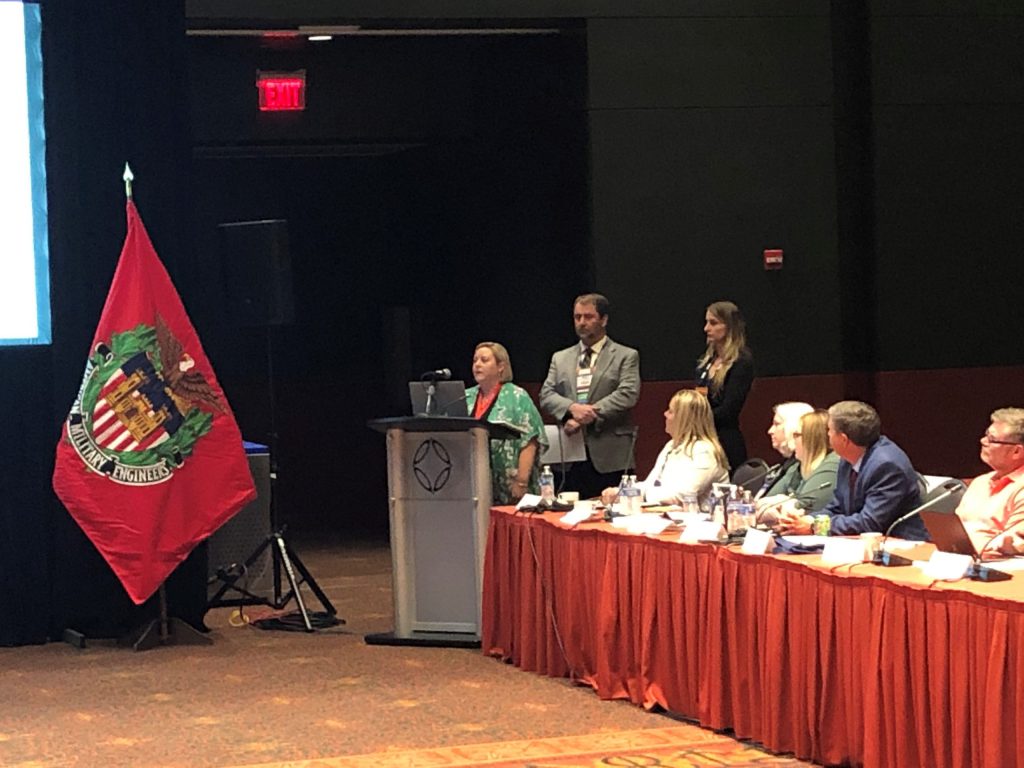
TME: Can you share more about the inspiration for the Knowledge Network and its goals?
Smith: As Programs Chair at the Kentuckiana Post, I found that a challenge we faced was finding engaging speakers and topics for our monthly membership luncheons. When the former Commander of USACE Louisville District came to me and expressed interest in seeing a presentation about value engineering, I realized I did not know where to begin to find a presenter. Shortly after, while sitting with Brec in Omaha, he mentioned his idea for a speaker’s bureau; instantly, I was excited about the possibility of having a centralized searchable database of speakers and presentations. The more we talked, the more a vision for the Knowledge Network grew. When we approached Camille, she immediately provided insight into SAME’s Human Capital COIs, and we were able to coalesce around a structure and implementation for the Knowledge Network.
We initially started with just creating a speaker’s bureau, where someone could access subject matter experts with readymade presentations. Soon, however, we saw we could do more. With the onboarding of SAME’s new Enterprise Management System this past year, we were able to harness the power of Open Water and Nimble and create a framework for something much larger than we initially dreamed.
Murray: The Knowledge Network launched from the seed idea of creating a speaker’s bureau of content that could be accessed by members. It soon became clear that the scope of this idea was far bigger than just a repository of information—we could expand and have a database of qualified and vetted experts with presentations that could be utilized at the Post level.
The thought was that we could organize presenters into categories based on the COIs. In turn, this would allow the membership to access different types of content that is aligned with their subject matter of interest.
TME: What was the process like in developing it as a joint Utilization Project?
“It soon became clear that the scope of this idea was far bigger than just a repository of information—we could expand and have a database of qualified and vetted experts with presentations that could be utilized at the Post level.”
Wilshusen: The idea of a speaker’s bureau had appeared on the Resilience COI’s workplan for several iterations. When I was selected for the LDP, I knew what I would do for my Utilization Project. However, I also knew I would need assistance to frame the idea into a usable product. With 20 new friends in our cohort, I socialized the idea among us and was blessed to find Brandi and Camille. We set tasks and goals and scheduled weekly and bimonthly meetings to stay on track. Most notably, we became close friends through the process.
Smith: Working with Brec and Camille was the highlight of the LDP for me. The three of us are vastly different people, with vastly different backgrounds, jobs, and stations in life; and yet, we came together and were able to take the very best we had to offer and turn it into something special. Being able to bounce ideas off them and divide and conquer allowed us to deliver a high-quality project that will be utilized by the Society.
Working in a group also creates an accountability factor you do not necessarily have when working alone. We could help hold each other to deadlines and jump in and pick up the slack when needed.
Murray: The team aspect of this project implemented what I feel the program is all about. We each stepped up in complimentary ways and worked together to accomplish our goals. We all reside in different time zones, but instead of that hindering the experience, we were able to pool resources and intel on the different ways this project could enhance each of our Posts. Needs vary geographically, and the beauty of the Knowledge Network is that it provides access to experts in all arenas, from environmental to cyber security, from coast to coast.
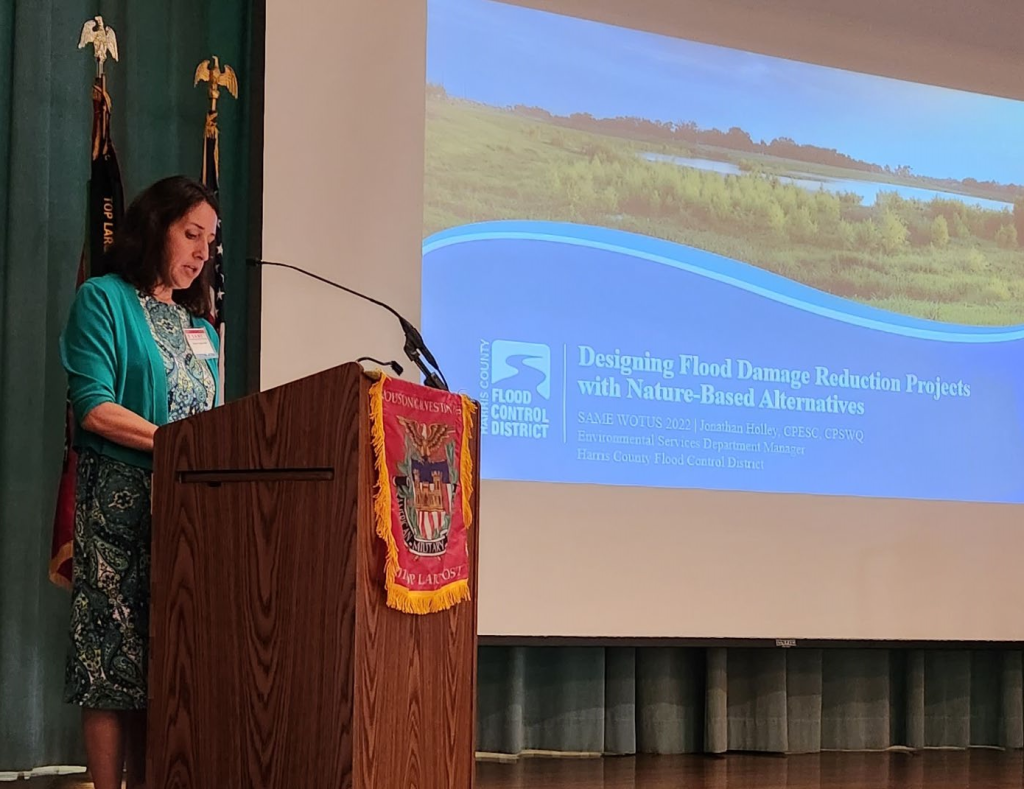
TME: Were there any surprises you discovered in the process of development?
Smith: What was the most surprising to me was the dedication and full steam ahead mentality that SAME took in supporting our project. The National Office jumped in and spent countless hours working with us to design and redesign the system. At times we were designing the ship as we were sailing, but staff was right there with us. The enthusiasm and encouragement we received really lit a fire for us and pushed us to want to accomplish more.
Murray: I was surprised at the amount of support we received in getting this system to work and designing it to our needs. The involvement from the staff really inspired us to keep going. When Brec reached out to the COIs on how this was going to work, we received an overwhelming amount of feedback. It made it clear we were on the right path.
Wilshusen: I was amazed at the reception our idea received from the UPIC Committee. We got a huge “shot in the arm” when Joe Schroedel urged us to think bigger and allocated significant staff time to our effort, helping us build a better tool that encourages volunteerism within the Society. The investment that the Board of Direction approved to replace the former membership database with Nimble was key to making the Knowledge Network function seamlessly. I doubt we could have produced this prior to 2021.
TME: What has been the experience of continuing development of the project after graduating from the LDP?
Smith: We were fortunate to have the bulk of our project completed during the program year. We were careful to phase it in a way that we could maximize our time with the available resources. After graduation, our lives all got exponentially busier! LDP was a really rewarding experience, both personally and professionally, and I did want to remain involved even graduating. I volunteered to lead one of the books for this year’s cohort and stepped in as Co-Chair for the LDP Task Force.
Currently, we are working our way through our implementation plan, which includes training COI points of contact, enrolling subject matter experts, and verifying that the system is ready for use. After working together our familiarity has evolved into a shorthand that allows for fewer meetings and shorter communications.
Wilshusen: We have tried to maintain our pace of collaboration after graduation, but our schedules have changed a bit. Graduation brought job changes for each of us and new roles within SAME, making ongoing collaboration more challenging. The National Office—particularly Natasha Rocheleau, Rob Biedermann, Belle Febbraro, and Carl Locus—have continued to support us valiantly.
TME: Any success stories or early wins you can share?
Smith: I think the real success story is in the familiarity with which everyone already talks about the Knowledge Network. The system is only now live as of this fall but being referenced by multiple people across SAME as a tool that can solve a great many needs and gaps. From being a place to store succession toolkit documents to mentor applications, the Knowledge Network could become an invaluable tool for a diversity of day-to-day operations.
Murray: The success so far has been the potential of the Knowledge Network being open to such a variety of different applications and pushing the boundaries of its capabilities. I was asked the other day if SAME had a network of applicants that could be evaluated for internships. Imagine a platform that could provide companies with a pool of candidates and their resumes for internships or even employment opportunities. This is all possible with what we have developed through the LDP, and further increases the benefit of being a SAME member.
Wilshusen: When we briefed the Board of Direction earlier this year, leadership wholeheartedly embraced the effort, and I saw the excitement in the faces of the COIs. Their support has been nothing short of astounding.
TME: What sort of challenges have you encountered?
Smith: Time and distance have been our biggest challenges. All three of us are busy with jobs, personal lives, and family responsibilities. Between us, we cover three different time zones, so figuring out a regular meeting time has been difficult throughout.
Right now we are focused on getting the system live and functioning, as well as enrolling subject matter experts and training users. In the long term, we hope the Knowledge Network will become integrated into the day-to-day of SAME. This platform can become a centralized place to find an expert, identify next month’s speaker for your Post, or scroll through past presentations.
Additionally, we initially planned a third phase of the Knowledge Network that would encompass a content repository, but we ultimately made the decision to remove it from our plan in the near term. We are continuing to work with staff on the right path forward for this phase.
Wilshusen: For many years I have felt that SAME has amazing thought leaders, but sometimes our incoordination detracts from advancing the Society’s mission. That is where our focus on “operationalizing the COIs” has paid dividends. In all my years with the Resilience COI and The Infrastructure Security Partnership prior to that, I witnessed many good ideas from colleagues. Now, we are bringing those experts to a wider audience.
TME: What’s next for the Knowledge Network?
Smith: Right now we are focused on getting the system live and functioning, as well as enrolling subject matter experts and training users. In the long term, we hope the Knowledge Network will become integrated into the day-to-day of SAME. This platform can become a centralized place to find an expert, identify next month’s speaker for your Post, or scroll through past presentations.
Murray: Long term, we want the Knowledge Network to provide a platform for future ideas. We also want to keep the energy alive to inspire other LDP students to take their projects to the next level.
Wilshusen: Our initial benchmark is to enroll at least 300 speakers with 500 speaking topics that encompass 12 to 15 technical and management areas. Getting there will require substantial effort: we need subject matter leaders to enroll and populate the speaker’s bureau; we need to make use of the lists we generate; and we need users to engage in making connections. Bottom line, we need your help to help forward SAME’s value. We have lots left to develop!
Cultivating Expertise
The Knowledge Network will provide SAME with a centralized clearinghouse of multi-discipline A/E/C experts. Members, Posts, and COIs can utilize the database to identify and contact thought leaders and speakers throughout the Society. The Knowledge Network will also, in time, provide access to engaging and relevant programs and presentations.
To help get the Knowledge Network off the ground, SAME is looking for individuals to submit themselves as experts. To get started, visit www.same.org/knowledge-network, log into “My Account” then click on the “Apply to be a SME” link.
Spotlight on Our Members
SAME’s multidisciplined membership spans the uniformed government, government civilian, private industry, academia, nonprofit, and student sectors. Through our uniquely joint environment, Society members collaborate and drive solutions for some of the toughest engineering challenges facing the A/E/C industry and our national security. Learn more about the benefits of SAME membership.
-
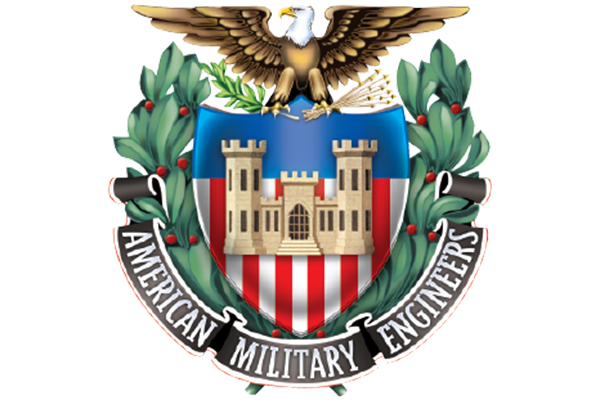
Voting Deadline is April 15 for the 2025 SAME National Election
The 2025 SAME Board of Direction national election will end April 15. This year’s voting includes candidates for President-Elect, Vice President, and Elected Director. -

SAME Career Center Provides Access to Over 29,000 Open Jobs
For job seekers looking for work in the Construction, Architecture or Engineering fields, the SAME Career Center is truly a one-stop-shop, with over 29,000 open jobs to browse. -

2025 SAME National Election: March 1 to April 15
The 2025 SAME Board of Direction national election will run from March 1–April 15. This year’s voting includes candidates for President-Elect, Vice President, and Elected Director. -
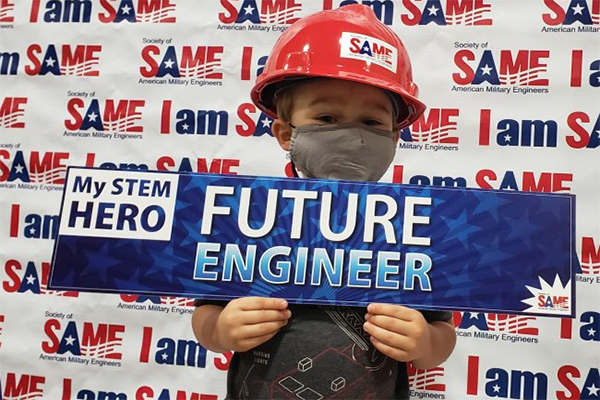
Join SAME As We Celebrate E-Week 2025!
Join SAME as we celebrate E-Week in recognition of engineers, and showcasing how our own SAME members in the A/E/C industry drive innovation and progress. -
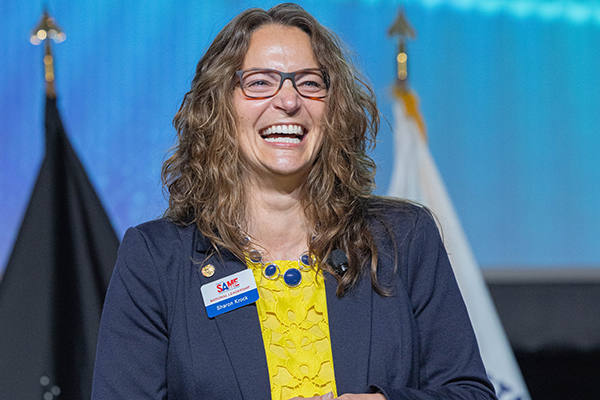
Sharin’ the Value! An Interview With SAME President Sharon Krock
TME interviewed SAME National President Sharon Krock about her personal journey within SAME, her instrumental role in the development of the 2030 SAME Strategic Plan, and how she sees the Society embracing her catchphrase of Sharin’ the Value.
